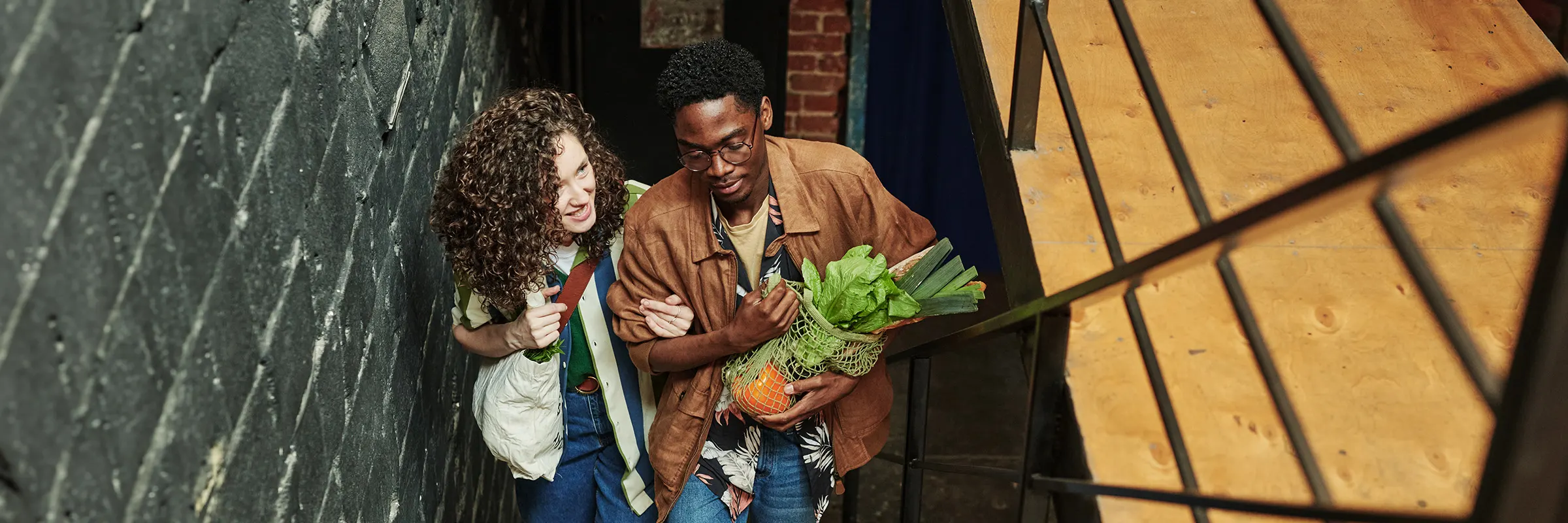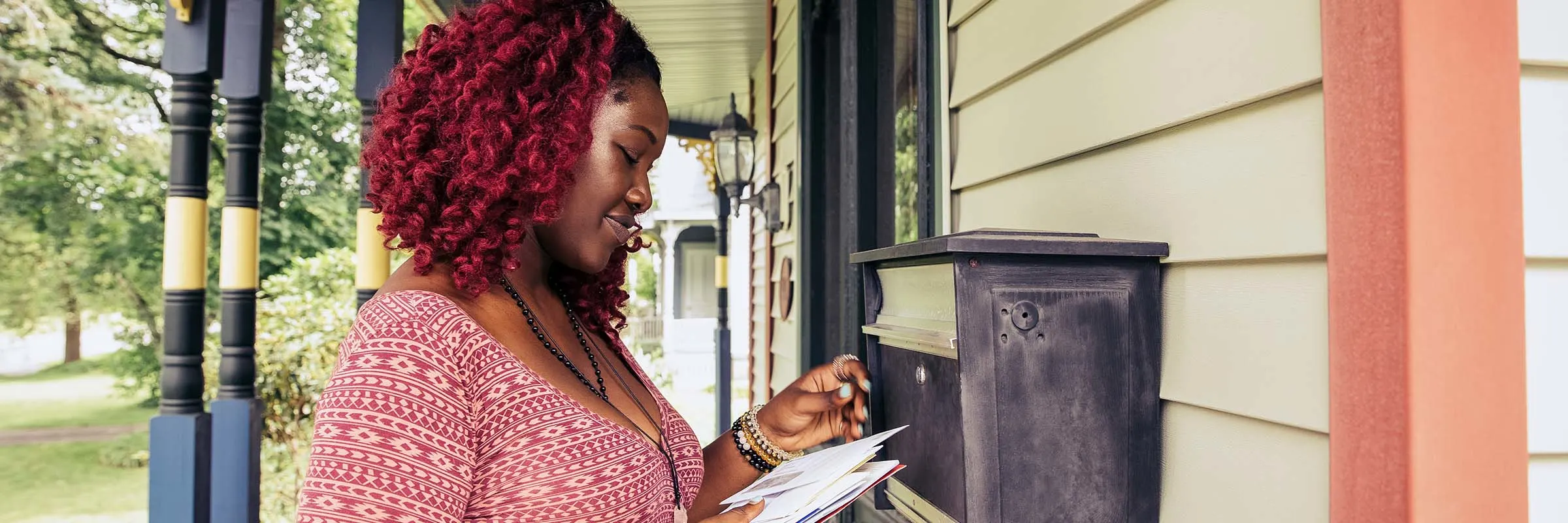What we'll cover
How mortgage buydowns work
Pros and cons of rate buydowns
Buydowns vs. discount points and ARMs
High mortgage rates can make it tricky for home shoppers to find affordable properties — and some sellers could have trouble enticing buyers to purchase at their listing prices. Enter mortgage rate buydowns: a home financing strategy that can take some of the interest burden off buyers and make mortgages more affordable for the short term.
How do mortgage buydowns work?
Mortgage rate buydowns temporarily reduce the buyer’s monthly payment by lowering the interest rate for the first one to three years of the loan. A buydown is like a subsidy offered by the seller (or homebuilder) to the buyer. Typically, the seller puts funds into an escrow account and that money is paid to the lender monthly, essentially lowering the buyer’s monthly payment during the buydown period.
For example, say you purchase a $400,000 home with a 20% down payment and take out a $320,000 30-year mortgage at 7% to cover the rest. If your seller offers a 2-1 buydown, the mortgage rate is lowered by 2% during the first year, 1% during the second year and will remain at 7% for the third year through the thirtieth year.
Tip: Before you dive into buydowns calculate your monthly mortgage payment based on your rate and loan term with this free calculator.
Mortgage buydown costs
Temporary mortgage buydowns are often negotiated between the seller and buyer during the homebuying process. Sellers will offer a buydown to incentivize the buyer to purchase the home without having to reduce their asking price. This means the buydown doesn’t cost the buyer anything. Instead, the seller will pay funds equal to the amount of interest saved by the buyer.
Let’s revisit the example above to see how much the buyer would save (and what the seller would subsidize) with a 2-1 buydown.
Year | Interest rate | Monthly payment | Monthly savings | Annual savings |
|---|---|---|---|---|
1 | 5% | $1,718 | $411 | $4,932 |
2 | 6% | $1,919 | $210 | $2,520 |
3-30 | 7% | $2,129 | $0 | $0 |
In total, this 2-1 buydown agreement would save the buyer and cost the seller $7,452.
Buyers can potentially save thousands of dollars by reducing their loan rate by just one or two percentage points temporarily.
Types of temporary mortgage rate buydowns
Buydowns can be structured differently depending on the agreement between the buyer and the seller or builder.
3-2-1 buydown
A 3-2-1 buydown lasts three years. In year one, the mortgage rate is reduced by 3%; in year two, it’s reduced by 2%; and in year three, it’s reduced by 1%. In year four and so on, the mortgage rate reverts to the full amount.
1-1-1 buydown
This type of buydown reduces the interest rate by 1% for three years.
2-1 buydown
As we discussed in the earlier example, this buydown structure reduces the mortgage rate by 2% in year one and 1% in year two.
1-0 buydown
The 1-0 buydown lasts for just one year and lowers the mortgage rate by 1% during that time.
Pros and cons of mortgage buydowns
As with many financial decisions, you should weigh the pros and cons of a mortgage buydown to decide if it’s right for you.
The advantages
The greatest advantage to a mortgage buydown is the interest savings. Buyers can potentially save thousands of dollars by reducing their loan rate by just one or two percentage points temporarily. The reduced interest rate can make monthly payments more manageable and help new buyers ease into the full cost of homeownership. For buyers who expect to raise their salary within a few years, a buydown can help make payments easier until their income increases.
Buydowns can also benefit sellers and builders. If a seller is having a tough time getting their home off the market, a buydown can be used as a selling tool to appeal to more buyers. Similarly, buydowns can help sellers or builders sell properties without having to lower their listing price, which could otherwise have a negative impact if they want to sell more properties in the area.
The disadvantages
Buydowns are not always available to buyers depending on the lender. For example, certain government-sponsored lenders limit the concessions a seller can make. Buydowns will not impact a buyer’s ability to qualify for a loan. Instead, you must qualify for the loan at the full interest rate first before a buydown can be put in place.
Buyers who opt for a buydown should be prepared for the increase in their monthly payments. If a buyer can’t afford the monthly payment after the rate increase, they may be at risk of losing the home.
Mortgage buydowns vs. mortgage points
Similar to a mortgage buydown, mortgage points allow buyers to lower their interest rates — but with a few key differences. Buying mortgage discount points permanently lowers your interest rate. Discount points can be purchased by the seller as a sales incentive, but they are typically paid for by the buyer as an additional upfront fee at closing.
Typically, one discount point is equal to 1% of the mortgage loan amount. While it varies among lenders, usually purchasing one discount point will lower your interest rate permanently by 0.25%. If you are considering discount points, be sure to research rates from multiple lenders.
Calculating your breakeven point
As a buyer, purchasing discount points can potentially save you hundreds or thousands of dollars over the lifetime of your mortgage. But because you have to pay for the points upfront, it takes time to recoup the savings. If you plan to refinance or move to a new home after only a few years, you might not end up saving money in the long run. So, before you buy points, calculate your breakeven point. To do this, divide the cost of your discount points by the monthly savings.
Let’s go back to our earlier scenario, in which you have a $320,000 mortgage with a rate of 7%. You purchase two discount points at $3,200 each. Together, these points reduce your rate permanently to 6.5%, effectively lowering your monthly payment from $2,129 to $2,023. With an upfront cost of $6,400 and a monthly savings of $106, it will take about 60.4 months — just over five years — to break even.
Mortgage buydowns vs. ARMs
Adjustable-rate mortgages (ARMs) are another option buyers can explore to lock in a lower interest rate. Unlike a mortgage buydown, ARMs do not involve the seller; they are a type of mortgage loan. With an ARM, the interest rate is typically set at a rate for an initial period (often five to seven years), after which the rate is subject to change every six months or annually. ARMs don’t make sense for all borrowers, but they may be a good option for those who plan to live in their home for the short-term, or refinance, before the fixed-rate period ends.
Explore ways to reduce your rate
Let’s face it: Home shopping can be daunting at times. Fortunately, as a homebuyer, you have options when it comes to finding a rate suitable for your financial situation. From negotiating with your seller for a mortgage buydown to purchasing discount points up front, to researching and comparing rates from several lenders, you can make homeownership a more affordable venture in the long run.


